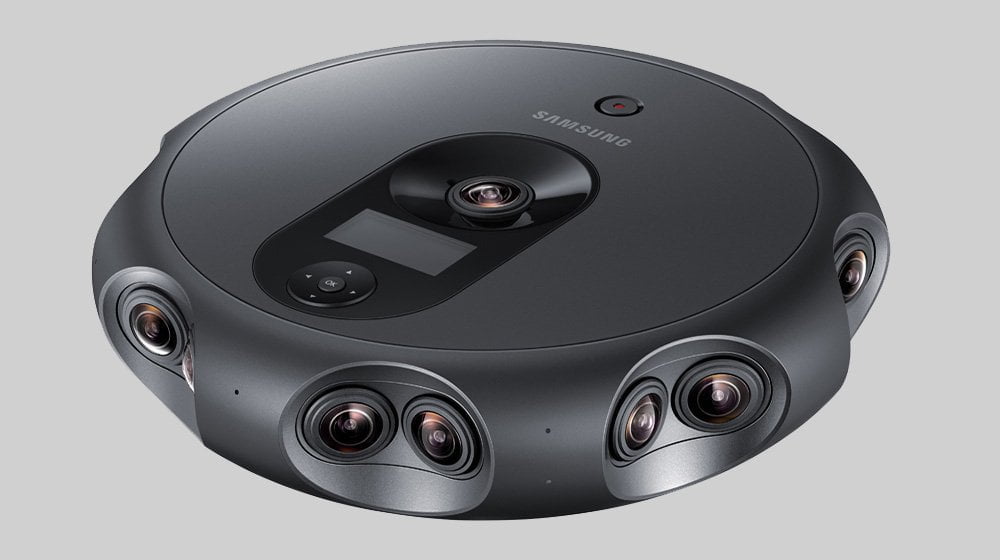From product demonstrations in virtual reality to 3D podcasts, businesses are clamoring to use new video technology in their marketing, services and more. For small businesses, the barrier of entry in some areas remains the price.
For example, the latest camera addressing livestreaming 3D content for Virtual Reality comes from Samsung. The 360 Round was designed as an all in one solution to capture, view and edit VR content. But all of this comes at a price to give most business owners sticker shock.
The design is Samsung’s way of giving creators a rugged device they can use anywhere. It is a camera with 17 lenses for capturing 4K 3D video and spatial audio, as well as creating 3D images with depth.
The Samsung 360 Round is entering a very fragmented market with devices across a wide range of specs and prices. For a small business, this unit has many pros, but the price and size may be deterrents. Still for those seeking to take advantage of the huge Virtual Reality potential in the coming years, the camera would seem to more than do the job.
Suk-Jea Hahn, Executive Vice President of Samsung (KRX:005930) Electronics’ Global Mobile B2B Team, highlighted some of the reasons it delivers for today’s creators in the press release, “The combination of livestreaming capabilities, IP65 water and dust resistance and 17 lenses makes this camera ideal for a broad range of use cases our customers want — from livestreaming major events to filming at training facilities across various industries.”
Specs of the Samsung 360 Round Camera
- 17 cameras with 1/2.8-inch, 2MP image sensor and f/1.8 Lens
- Video resolution: Up to 4,096 x 2,048 at 30fps per lens
- 10GB of RAM and 40GB of internal memory, Up to 2TB SSD, up to 256GB SD card
- Microphones: 6 internal (spatial audio); 2 external ports
- USB-C connector port
- IP65 water and dust resistance
- LAN or USB-C connectivity
- Dimensions: 205 x 205 x 76.8mm, 1.93kg or 8″x 8″ x 3 “, 4.25 pounds
Price and Availability
Samsung has not announced the price for the 360 Round, but CNet and Fortune have reported it is going to cost $10,500. This is much cheaper than the $45,000 Nokia Ozo and slightly better than the $15,000 GoPro Odyssey, but still very pricey.
When it becomes available later this month, the question is whether any small businesses seeking to explore the new opportunities of VR will be able to afford it. The VR industry is growing and slated to reach $215 billion by 2021, according to an International Data Corporation report. But it will take very unique businesses to turn such expensive technology into a positive ROI .
Image: Samsung

